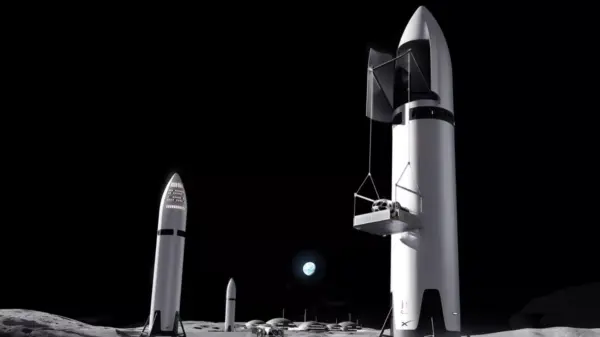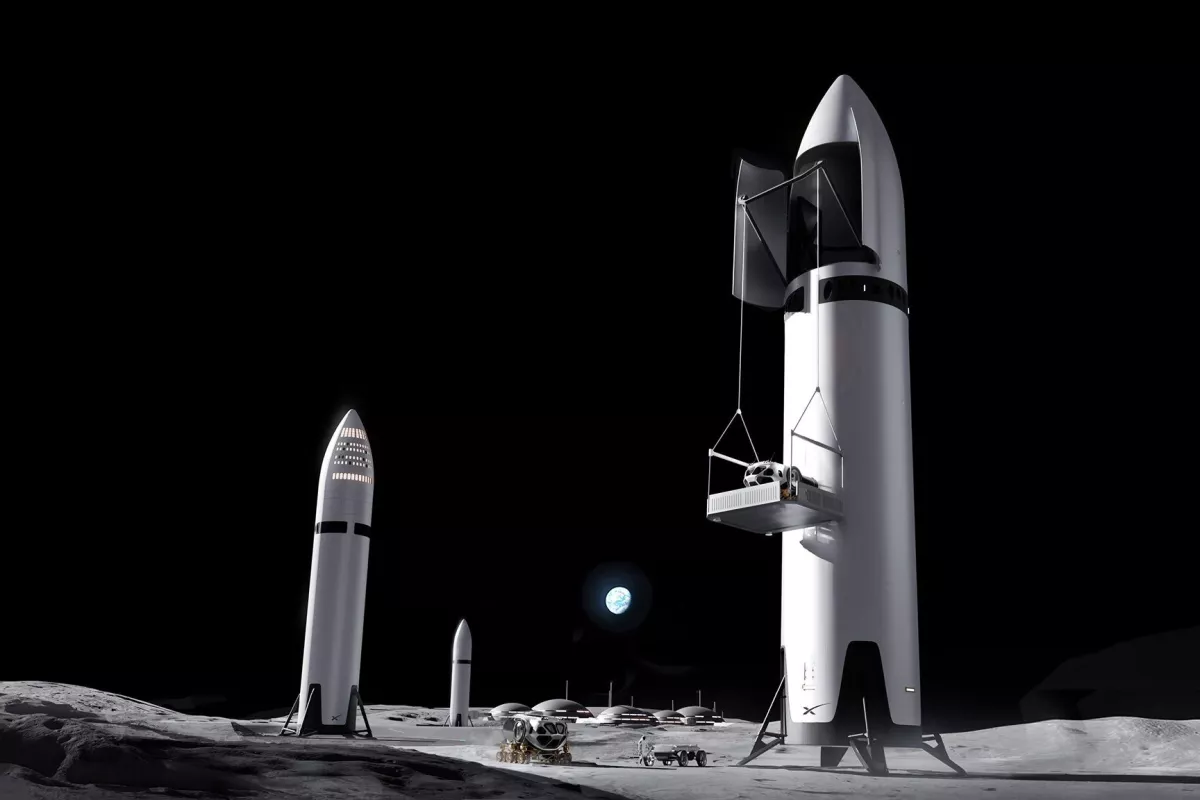SpaceX has introduced a revised design for its lunar lander aimed at expediting the return of US astronauts to the Moon. This announcement responds to mounting pressures from NASA, which is keen to overcome delays in its ambitious Artemis program, intended to create a sustainable human presence on the lunar surface.
The Artemis program has been overshadowed by challenges including cost overruns and technical setbacks. A significant complication has arisen due to the slow progress on the lunar lander, which is crucial for any successful Moon mission. Without a reliable method to land astronauts on the lunar surface, the entire initiative risks being undermined.
Initially, SpaceX’s plan involved constructing a lander based on its advanced yet still-experimental Starship rocket. This design aimed to deliver up to 100 tonnes of cargo to the Moon, which would facilitate the establishment of a permanent base. Achieving this would have necessitated between 15 and 30 Starship launches to support fuel transfers and lander operations in a Near-Rectilinear Halo Orbit (NRHO).
Given the current delays, including a postponed cryogenic propellant transfer demonstration now scheduled for 2026, NASA has sought to accelerate the lander program. In October 2025, NASA’s Acting Administrator, Sean Duffy, announced the reopening of competition for the lunar lander contract, inviting submissions from both SpaceX and rival Blue Origin by the deadline of October 29, 2025.
In response, SpaceX has simplified its lander design. This new plan focuses on enhancing speed and crew safety rather than maximum cargo capacity. The design will include less equipment and utilize expendable tanks to reduce weight. Furthermore, SpaceX has opted for a low-lunar orbit rendezvous instead of the more complex NRHO, which will lower energy requirements and improve safety in case of an abort scenario.
The streamlined approach aims to simplify hardware and establish clear milestones to expedite the approval process for various onboard systems. Modifications to the Starship will include two new airlocks, which will offer more volume than the Apollo Lunar Module, and an innovative hoist system for lowering astronauts to the lunar surface instead of using a lengthy ladder.
This new strategy significantly reduces the number of fuel delivery missions needed for landing to fewer than 10, enhancing efficiency and effectiveness. SpaceX reiterated its commitment to NASA’s goals, stating, “Starship continues to simultaneously be the fastest path to returning humans to the surface of the Moon and a core enabler of the Artemis program’s goal to establish a permanent, sustainable presence on the lunar surface.”
By refocusing its design and approach, SpaceX aims to align more closely with NASA’s timeline and objectives, all while maintaining its ambition to play a pivotal role in the next chapter of lunar exploration.






































































